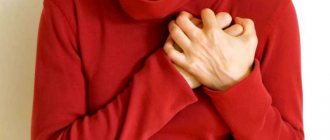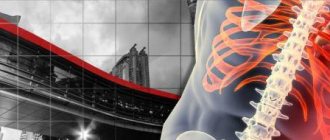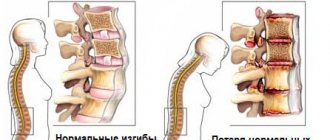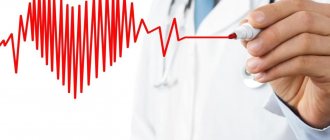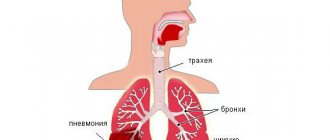In fact, the question that was asked by a reader of the site contained the phrase - when you inhale, the heart hurts... There was a mistake in the writing, correctly - when you inhale, the heart hurts, and in the word “colitis”, which by the way is the name of inflammatory disease of the large intestine , the emphasis falls on the letter I. However, this does not make pain in the heart area any less dangerous a symptomatic sign for health and preservation of life.
What else can cause pain when inhaling in the area of the heart, if not it?
Let us immediately clarify that if the pain sensations are really stabbing in nature, then in whatever case they occur: during inhalation, during exhalation or during a pause in the respiratory cycle, at rest, during or after physical activity, or even during sleep - These are not heartaches.
Only doctors can help understand why they arise. It is imperative to play it safe, and in any case, first of all go to an appointment with a cardiologist.
How dangerous is the condition?
Pain in the heart when exhaling or inhaling occurs in two conditions, based on which it is determined how dangerous this symptom is. In the first condition, when a completely healthy person feels an aching or stabbing pain in the heart when inhaling or exhaling, which can intensify with physical activity, there is nothing special to be afraid of, since, most likely, these are not pathological sensations.
As for people who have heart pathologies or diseases associated with the respiratory system, their causes of heart pain are much more serious. People with diseases of the digestive tract should be wary of similar manifestations.
Stitching pain in the heart area
Important! Attention should be paid to pain when inhaling in the region of the heart, which occurs without exposure to stress, as it characterizes acute coronary syndrome or respiratory failure, in which urgent medical intervention is mandatory.
Treatment options
If you experience pain in the heart area when inhaling, you must make an appointment with your doctor. To determine the cause of the condition, a specialist will prescribe a full examination. Based on the results of the procedures, therapy is recommended. This may include:
- use of medications;
- physiotherapy;
- surgery (if necessary).
First aid
As first aid for heart pain, you must do the following:
- Comfortable to sit or lie down.
- Calm yourself down. If you cannot do this on your own, you can take a sedative - Corvalol, tincture of motherwort or valerian, Valoserdin, Valocardin.
- In case of severe pain, you need to drink an NSAID - a non-steroidal anti-inflammatory drug. For example, Nurofen in capsules - it quickly reduces pain. You can replace it with Ibuprofen, Mig.
If after 15–30 min. the discomfort does not go away, you need to call an ambulance. You should ask the dispatcher if you need to take any medications before the ambulance arrives.
Fighting the causes of colitis
After identifying the causes of the condition, the doctor prescribes the use of medications. Depending on the underlying disease, drug therapy may vary.
| Cause of pain | Method of treatment |
| Diseases associated with inflammation | The doctor prescribes NSAIDs and corticosteroid drugs. In rare cases, a person is prescribed antibacterial agents |
| Problems with muscles and ligaments | They use ointments for external use, as well as tablets and injections to reduce pain |
| Pathologies of the lungs and blood vessels | In case of pulmonary embolism and atherosclerosis, blood thinning drugs (anticoagulants) are prescribed. This is necessary to improve blood supply. In case of angina pectoris, it is necessary to take Nitroglycerin. If VSD is diagnosed, the doctor recommends taking sedatives and medications that dilate blood vessels |
| Infections and viral diseases | In case of infection, the doctor prescribes the use of antibacterial drugs. In case of virus infection - antiviral. If you have been diagnosed with shingles, it is recommended to use topical ointments or gels to reduce the rash on the skin |
| Neuralgic pathologies | To reduce pain it is necessary to use: · drugs for local anesthesia. For example, with lidocaine; · methods of physiotherapy; · transcutaneous electrical nerve stimulation (TENS) – effects on skin receptors using electric current |
| Autoimmune diseases | Drugs are prescribed to strengthen the immune system. Additional medications are prescribed based on the individual characteristics of the body. |
| Stressful situations | Sedatives and vitamin preparations. Psychotherapy and relaxation sessions will not harm. It is necessary to devote time to physical training and nutrition. As a last resort, antidepressants and antipsychotics are prescribed |
| Pneumothorax | To pump out excess air, perform a puncture or drainage |
| Complicated pericarditis with accumulation of exudate | Urgent surgical intervention is required. Pericardiocentesis may be performed - this is the removal of excess fluid from the pericardial sac. They can also perform a pericardiectomy - removal of the pericardium. |
Cardiac pathologies characterized by pain in the heart when inhaling
Pain in the heart area that occurs when inhaling or exhaling often becomes one of the symptoms of a serious pathology associated with the cardiovascular system:
- Cardiac ischemia. The main cause of the disease is the formation of cholesterol plaques on the inner walls of blood vessels and arteries located in the pulmonary circulation. With such deviations, the pain in the area of the heart is burning or pressing (tingling of the heart is not typical for ischemic heart disease), and increases with physical activity. With coronary heart disease, pain attacks worsen at night. Medicines of the nitrate group eliminate sensations.
- Angina pectoris. It is considered an acute stage of IHD and occurs when the lumen of the arteries of the pulmonary circulation decreases. In addition to pain on the left side of the chest, additional symptoms are noted with angina: acute lack of air (suffocation), shortness of breath, pallor of the skin and arrhythmia. If treatment is not started at this stage of development of the pathology, the patient will die in the near future.
Angina pectoris as a cause of pain in the heart when inhaling
- Vasospasm of coronary vessels. Occurs due to previous stress and depression. According to the principle of its course, the pathology is similar to ischemia and angina pectoris, as it causes the blood vessels to narrow, resulting in a deterioration in the blood supply to the heart. In addition to pain in the heart area, during vasospasm of the coronary vessels it is difficult to breathe, and the forehead is periodically covered in cold sweat. During exacerbation, attacks of shortness of breath are observed that occur without the influence of physical activity on the body. The pain is compressive and may intensify with inhalation. Relief from painful attacks is temporary, and only competent treatment will help eliminate the disease.
- Pericarditis. The pericardial sac becomes inflamed, resulting in compression and stabbing of the heart when inhaling, resulting in coughing and rapid heartbeat. In the acute stage, the pathology can manifest itself as attacks of shortness of breath (a person cannot take a deep breath) or hiccups.
- Inflammatory diseases occurring in different layers and areas of the heart. Another reason why the heart hurts when trying to breathe is inflammatory processes that affect the myocardium (myocarditis), heart valves (endocarditis) and other parts of the cardiovascular system. With such deviations, the patient experiences acute pain, which may be accompanied by additional symptoms: fever, shortness of breath and shortness of breath. If treatment is not started in time, the progressive inflammatory process will lead to life-threatening complications.
Important! Pain when inhaling can have a different nature, so it is possible to determine the pathology as a result of which it arose only with the help of modern medical diagnostics.
Causes of pain
The feeling of pain in the left side of the chest has a different character. A person may experience sharp and aching pain, periodic and constant, pressing and stabbing. Among the reasons for their appearance are:
- precordial syndrome;
- pinched or irritated intercostal nerves;
- presence of air in the chest;
- dry pleurisy or pericarditis;
- bruises and chest injuries;
- heart pathologies;
- neurotic conditions.
The severity of the condition and its treatment depend on the type of problem. Consultations with a cardiologist, pulmonologist or neurologist may be necessary. We will talk about the features of each pathology further.
Heart diseases
The first thing that is suspected when pain in the chest area appears is heart disease. They can be distinguished from non-cardiac diseases by the following characteristics:
- pain occurs periodically, the duration of each attack is 10-15 minutes;
- More often, heart pathologies cause burning and pressing pain;
- attacks are triggered by stress and physical activity;
- stabbing pain can radiate to the arm, shoulder blade or neck on the left side.
Chest discomfort during breathing occurs due to cardiac pathologies:
- Pericarditis
- inflammation of the outer lining of the heart muscle, develops for various reasons. It is characterized by the accumulation of fluid in the pericardial cavity and disturbances in the functioning of the cardiac system. The pain is dull and pressing, worsens with swallowing, coughing and deep breathing. Additional symptoms include: a feeling of lack of air, loss of strength, poor appetite, increased body temperature, sweating. - Angina pectoris
- a common symptom of dysfunction of the cardiovascular system. Manifests itself in a feeling of discomfort, compression behind the sternum. The attacks appear intermittently and last from 10 to 15 minutes. - Heart attack
- a condition requiring immediate medical attention. The patient feels that something is pressing inside, the pain is transmitted to the left arm, neck, and shoulder blade. Nausea and heartburn, chills, and possible fainting also appear.
If a set of symptoms of heart disease appears, you must immediately seek help; delay can be life-threatening.
Causes of traumatic nature
Any injuries to the chest and ribs can cause sharp stabbing pain. A bruise and fracture of the bones of the chest are characterized by the appearance of a pain symptom not only when inhaling and exhaling, but also when changing the position of the body. Sometimes mechanical impact on the sternum causes traumatic pneumothorax.
Stitching in the heart area, what to do if it is pneumothorax? The diagnosis is characterized by the accumulation of air in the outer lining of the lung. It may be intact or a similar phenomenon is caused by a violation of the structure of the lung tissue, then they speak of spontaneous pneumothorax. Symptoms of the condition include:
- stabbing, sharp pain, radiating to the arm and neck on the left;
- discomfort increases with physical activity, coughing, laughing, taking a deep breath or diving under water;
- at rest, the pain subsides after a few hours;
- Additional signs include: pale complexion, shortness of breath, panic attacks, and sometimes a dry cough.
The risk group for spontaneous pneumothorax includes adult men under 40 years of age. Sudden changes in pressure, such as flying at high altitude, can cause disruption of the integrity of internal tissue. Only specialists treat the disease.
Pneumothorax can be a consequence of other diseases - tuberculosis, pneumonia, lung tumors.
Dry pleurisy - pathologies of the respiratory system
Often the cause of chest pain is pathology of the respiratory system. The pleura covers the lungs and chest cavity; any inflammatory lesions of this membrane are called pleurisy.
Features of dry pleurisy include:
- the left or right half of the chest constantly hurts;
- symptoms intensify with deep inspiration and coughing; immobilization of the affected side alleviates the condition;
- symptoms of general malaise are noted: temperature ranges from 36.6 to 39? C, chills and fever appear, appetite decreases, the patient feels weak;
- inflammation takes a long time, from 1 to 3 weeks, without proper treatment it develops into a chronic form.
The nature of pleurisy may lie in diseases of the lungs or nearby organs. In the first case, it is tuberculosis, pneumonia or pulmonary abscess. In the second - subphrenic abscess, infectious diseases of the abdominal cavity, pancreatitis and rheumatism.
Intercostal neuralgia
Intercostal neuralgia is of two types. In the first case, inflammation or pinching of the spinal nerve root occurs, in the second - the nerves in the intercostal space. The main symptom of neuralgia is pain localized in the chest; it can radiate to the lower back, neck or under the shoulder blade.
The pain is strong and burning. It gets worse with deep breathing, physical activity, sneezing, coughing, or sudden movements of the body if there is pressure on the nerve. Other signs of the disease include:
- involuntary muscle contraction;
- changes in skin color and sensitivity in the area of nerve damage;
- the pain may be accompanied by numbness in an area of the body, or the patient feels that this area is burning, stabbing, like needles.
Neuralgia is often confused with cardiac pathologies; it differs in the nature of the pain and its intensification when inhaling and exhaling.
Among the reasons for pinching or inflammation of the nerve root are:
- osteochondrosis;
- Bekhterev's disease;
- spondylitis;
- chest injuries;
- prolonged stress;
- excessive physical activity;
- infectious diseases;
- severe hypothermia;
- changes in hormonal levels;
- spinal injuries or diseases;
- allergic reactions;
- tone of one or more back muscles.
After the examination, the doctor will give recommendations on how to relieve pain, and then determine the nature of the pinched nerve. The diagnosis is not life-threatening, but you can get rid of it only after eliminating the cause.
Neuroses and precordial syndrome
Neurotic conditions can cause sensations of stabbing pain in the heart area. Usually in such cases, patients think about a serious illness; all their sensations are psychosomatic in nature. The patient may also complain of:
- feeling of a lump in the throat;
- that it is difficult to breathe;
- cardiopalmus;
- nausea;
- stomach ache.
Sensitive people and those who are under constant stress are susceptible to such conditions. Another selective symptom is precordial. The causes of the condition are still not fully understood, but it has its own characteristic features:
- sudden sharp pain in the chest area;
- the duration of the attack is from 0.5 - 3 minutes;
- pain occurs even at rest;
- breathing deeply is difficult;
- The frequency of attacks is always different, sometimes there are several attacks per day.
According to doctors, this syndrome occurs in people under 20 years of age and goes away with age.
Extracardiac pathologies in which pain occurs in the heart during inspiration
The reasons that a patient has severe heart pain when inhaling or exhaling may not always be cardiac pathologies. In some cases, pain when breathing occurs due to other diseases occurring in the musculoskeletal, digestive or respiratory systems. The list of these pathologies looks like this:
- Trauma to the chest (ribs or thoracic spine). Sometimes sharp pain when inhaling or exhaling occurs due to the fact that a nerve or muscle gets into a crack in the bone, which was formed due to a serious injury to the chest. In this case, you will feel like your heart is stabbing, and it is difficult to determine the source of pain without a medical diagnosis.
- Intercostal neuralgia. Occurs after trauma to the chest or as a result of a natural disorder of its structure. With this disease, the nerves located in the chest get between the ribs and over time, with constant intense movement, become inflamed, creating the feeling that the heart is sick. A characteristic feature of intercostal neuralgia is that its symptom can be a dull, sharp or nagging pain that occurs periodically.
Intercostal neuralgia as a cause of pain in the heart during inspiration
- Diseases associated with the respiratory tract: sore throat, bronchitis, pleurisy, pneumonia, pulmonary embolism. With such pathologies, pain in the heart when taking a deep breath is only an impulse that comes from the affected area (lungs, trachea, tonsils and other parts of the respiratory tract), so pain does not always occur on the left. Another characteristic sign of pain resulting from respiratory tract disease is that it cannot be relieved with nitroglycerin, validol or corvalol.
- Pathologies of the digestive tract: ulcers, gastritis, pancreatitis. As with diseases of the respiratory tract, the reason why the heart hurts when inhaling is an impulse sent from the affected area. To determine the presence or absence of cardiac pathologies in the body in this condition, it is necessary to undergo a complete diagnosis of the chest and abdominal organs.
- Osteochondrosis (disorders of the spine). If it hurts the patient to breathe (especially laugh), and with any movement the pain in the heart intensifies, then the cause of this phenomenon may well be osteochondrosis. The intervertebral discs wear out and compress the nerves between them, while the brain receives a pain impulse. The location of the pinched nerve can be different, so during inhalation or exhalation it can stab not only in the area of the heart.
Important! If an attack occurs once, then in most cases it is not associated with cardiovascular pathologies. And if the pain syndrome appears systematically and gets worse each time, this indicates that the heart still hurts, and it is this that needs to be treated.
Dry pericarditis
When you take a deep breath, pain in the heart area may appear due to dry pericarditis. The organ has a two-layer coating. When the pericardium becomes inflamed, a protein (fibrin) can be deposited on its surface, making it difficult to function. Its signs are:
- sudden onset of pain;
- her prolonged presence, without respite;
- constant nature of pain in each case;
- relief of sensations when bending forward and changing body position from horizontal to sitting;
- a variety of pains in each patient - from acute to burning and pressing;
- stretching sensations to the left side of the body (arm, neck, shoulder).
How to relieve a pain attack in the heart area that occurs when inhaling or exhaling
Doctors often hear the following complaints from patients: “I can’t inhale and exhale without pain in the chest, and when I laugh, the pain intensifies.” In most cases, it is difficult to immediately determine the cause of such symptoms and what the patient should do when they occur. Therefore, in order to find out the source of pain, the doctor invites the patient to undergo a complete diagnosis, based on the results of which he will be able to prescribe effective treatment.
Nitroglycerin is a drug that allows you to temporarily relieve a painful attack of pain due to angina pectoris.
But if an acute attack of pain occurs at night, when it is impossible to undergo diagnostics to detect the cause, then the only option is to temporarily relieve the pain. This is done as follows:
- A nitroglycerin tablet is placed under the tongue. If the cause of the pain lies in the cardiovascular system, the drug will eliminate the pain for a while (usually 10 to 15 minutes are enough for the tablet to act).
- If, after nitroglycerin, there is both a stabbing and stabbing sensation in the heart area, then the reason lies in the respiratory system, digestive tract or musculoskeletal system. In this case, it is recommended to take a strong painkiller to stop the attack that occurs.
Important! If pain in the chest is accompanied by a feeling of lack of air, sudden paleness, a person breaks out in a cold sweat, loses consciousness or feels very unwell, you must call an ambulance!
Respiratory diseases
Pain when breathing in the heart area accompanies pulmonary pathologies in all forms. The cause is a painful pleura. Pain receptors from it transmit impulses to the intercostal nerves. Painful sensations are localized in a certain part of the chest.
Discomfort can be caused by inflammation of the bronchi - the fibers of their nerves and trachea are located in the area of the vagus nerve.
Small vessels and the lining of the lungs give pain only when inflammation or neoplasms touch the pleura and affect the large bronchi. The greatest pain is achieved when the lungs are destroyed.
Diseases that manifest themselves as a symptom of pain in the heart area when inhaling:
- pneumonia;
- abscess;
- neoplasms;
- pleurisy.
In bronchopulmonary pathologies, pain is accompanied by wheezing and pleural friction.
Pneumonia has the following symptoms:
- shortness of breath of varying severity;
- high temperature 39.5 degrees Celsius;
- rave;
- high breathing and heart rate;
- cyanosis;
When over 60 years of age and complicated by other diseases, a particularly serious condition is observed.
The cause of pain when breathing can be inflammation of the membrane lining of the chest cavity, pleurisy. The reason leading to inflammation is:
- pneumonia;
- chest injuries;
- neoplasms of various nature.
Pleurisy happens:
- primary, caused by pleural rupture;
- secondary, caused by pneumonia.
Symptoms:
- pain is worse when breathing;
- discomfort is less when a person lies on the sore side;
- shallow breathing due to fear of pain;
- weakness, sweat and chills at night;
- The noise of the pleura differs when listening.
When the pleura is affected, the painful sensations are described by patients as stabbing, activated by coughing and breathing - the same as with myositis and injuries to the intercostal muscles.
Pneumothorax causes severe pain.
Severe pain in the heart area when inhaling is observed in the first stages of bronchogenic lung cancer. When cancer develops at the apex of the lung, the pain quickly affects the nerves of the brachial plexus and radiates strongly into the arm. The patient has a narrowing of the pupil on the side of the tumor localization.
Diagnosis of diseases that cause pain in the heart when inhaling
It is not possible to make an accurate diagnosis based on symptoms alone, so it is imperative to undergo additional diagnostics, which includes the following measures:
- Electrocardiography. The study is considered the most effective of all, as it allows the doctor to get a complete picture of electrical work and determine the presence of ischemia, causing acute or pressing pain in the chest or heart. Depending on the results of electrocardiography, additional procedures are prescribed.
- Examination of the heart with an echocardiography device. This diagnostic method is used in cases of suspected cardiac pathology, since the EchoCG machine is capable of scanning only one organ - the heart.
- Carrying out an ultrasound. Ultrasound diagnostics allows you to examine all organs, pathological disorders in which can cause “heart pain” during inhalation and exhalation (heart, lungs, stomach, pancreas).
- General analysis and biochemical blood. Allows you to differentiate pathology if there are several presumptive diagnoses.
Important! The doctor can prescribe effective treatment for the patient on an individual basis after making the correct diagnosis. If, when pain occurs in the chest area when inhaling, the patient self-medicates, this can cause serious complications, and even urgent medical care will not always be able to save the person.
Possible complications
All experts say that it is forbidden to endure pain in the heart. There is a possibility that they indicate the presence of serious pathologies. Without the help of a specialist, the disease can begin to develop. Depending on the primary cause of symptoms, the condition leads to heart attack, stroke or death.
Tingling in the heart when inhaling can be a consequence of various reasons. Most often, a person does not perceive the symptom as something serious and does not consult a doctor. For example, people blame everything on a slight malaise. It is not right. If symptoms appear, you should consult a doctor to avoid complications.
Diagnostics
If stabbing pain occurs, a person must undergo a comprehensive diagnosis to rule out various diseases. The first consultation is provided by a therapist, and you should also contact a cardiologist. In this case, the doctor will listen to the heart for murmurs and abnormal heart rhythms, and percussion (tapping) will also be performed. Thanks to the latter method, the doctor will quickly understand whether the organ is enlarged.
The cardiologist will refer the patient for an electrocardiogram, in which the regularity of the rhythm and the frequency of myocardial contractions can be recorded. After performing a cardiogram, the doctor can diagnose ischemia and arrhythmia.
Ultrasound of the heart helps to accurately determine the thickness of the myocardium, the functionality of the heart valves, their size and cardiac output. Additional methods for examining the heart are x-rays and magnetic resonance imaging. The latter method is one of the most modern; it can be used to visualize the organ and, accordingly, register all violations.
Angiography is a minimally invasive study of blood vessels in which a contrast agent is injected into the body. Thanks to this, the presence of spasmodic areas is diagnosed.
If the cause of colic in the heart area is not related to diseases of the heart and blood vessels, then you will need to consult other doctors:
- Gastroenterologist.
- Pulmonologist.
- Neuropathologist.
- Traumatologist.
- Surgeon.
Laboratory diagnostics are required. To do this, a person needs to donate blood from a finger and a vein.
